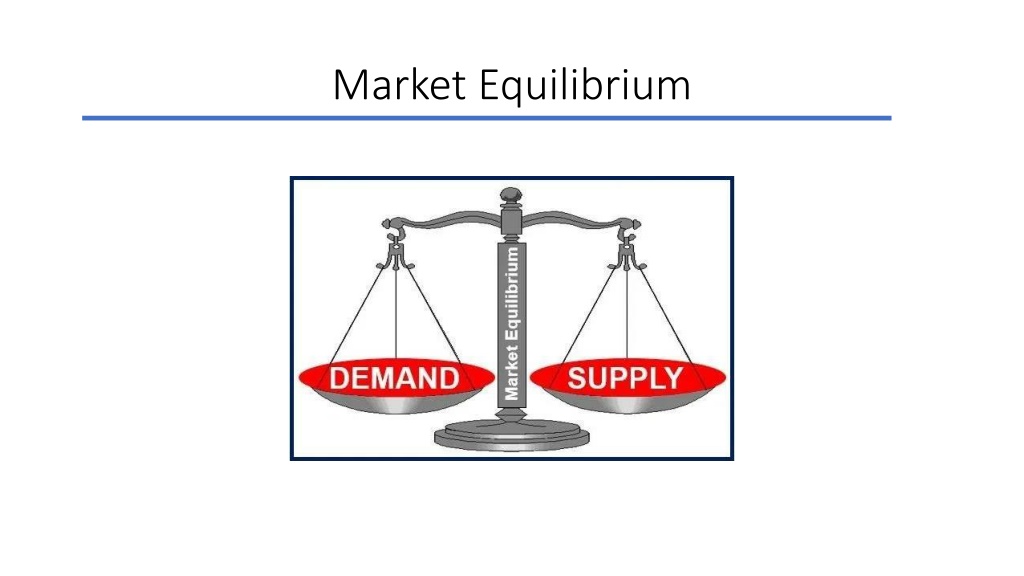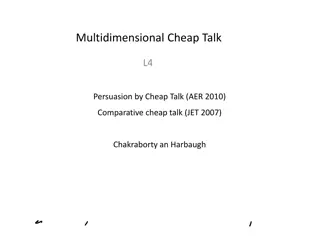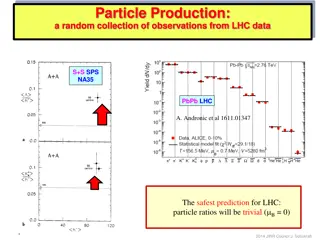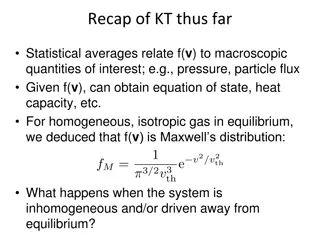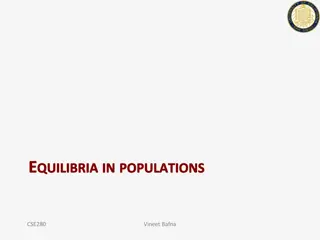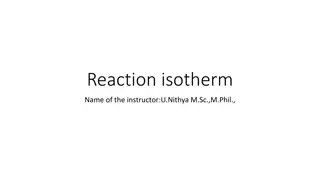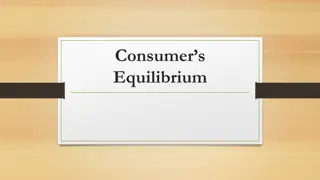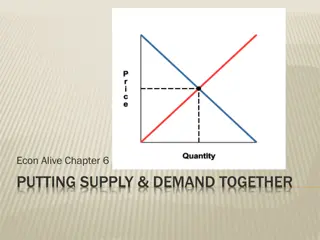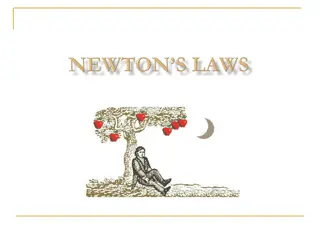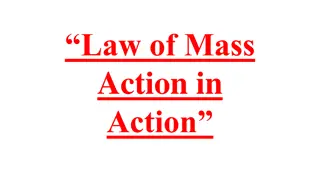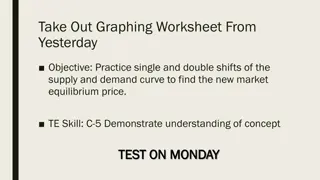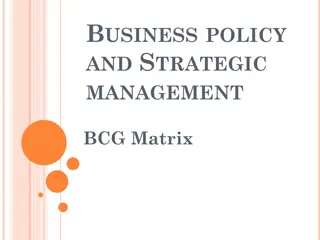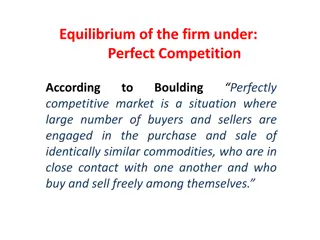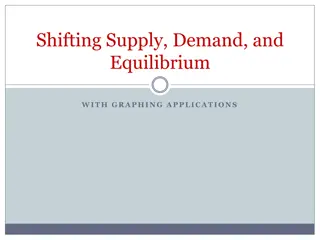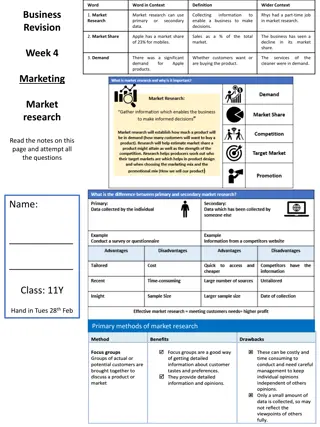Understanding Market Equilibrium
Market equilibrium is achieved when the quantity demanded equals the quantity supplied at a specific price, ensuring a balance in the marketplace. Demand and supply schedules play a crucial role in determining market equilibrium, with excess supply or demand occurring when prices deviate from the equilibrium point. By analyzing demand and supply schedules, we can determine how the market will respond to different price levels, ultimately leading to equilibrium where buyers and sellers are satisfied.
Download Presentation

Please find below an Image/Link to download the presentation.
The content on the website is provided AS IS for your information and personal use only. It may not be sold, licensed, or shared on other websites without obtaining consent from the author. Download presentation by click this link. If you encounter any issues during the download, it is possible that the publisher has removed the file from their server.
E N D
Presentation Transcript
Market Building Blocks Demand is the quantity of a good or service that buyers wish to purchase at each conceivable price, with all other influences on demand remaining unchanged. So far, we have focused on the demand of one individual Market demand is the collection of many individual demands represented as a schedule of quantities demanded at various prices Supply is the quantity of a good or service that sellers are willing to sell at each possible price, with all other influences on supply remaining unchanged. So far, we have focused on the supply of a single producer Market supply is the collection of many producer supplies represented as a schedule of quantities supplied as different prices.
Market Equilibrium Demand and supply schedules rest on the assumption that all other influences on supply and demand remain the same as we move up and down the possible price values. The expression other things being equal, or its Latin counterpart ceteris paribus, describes this constancy of other influences. We assume on the demand side that prices of other goods remain constant, and tastes and incomes are unchanged. We assume on the supply side that there are no technological changes in production methods. If any of these elements change then the market supply or market demand schedules will reflect such changes.
Market Equilibrium Bringing the demand and supply schedules together, we can analyze what the marketplace will produce. Ceteris paribus, at low prices, quantity demanded exceeds quantity supplied. The opposite happens when prices are high. When the quantity demanded equals the quantity supplied, the market is in equilibrium. The equilibrium price equates quantity demanded and quantity supplied it clears the market.
Market Equilibrium Excess supply exists when the quantity supplied exceeds the quantity demanded at the going price. This happens at higher prices suppliers wish to sell more than buyers wish to buy Excess demand exists when the quantity demanded exceeds the quantity supplied at the going price. This happens at lower prices buyers wish to purchase more than suppliers wish to produce Only at equilibrium price is the quantity supplied equal to quantity demanded.
Market Equilibrium Reaching market equilibrium: If the producer chooses a price that is too high, there will be no buyers a situation of extreme excess supply. When producers lower the price, the excess supply will decrease because the quantity demanded increases, and the producer will supply less. Excess supply means there are producers willing to supply at a lower price, which puts downward pressure on any price above the price that equates demand and supply. Prices below the equilibrium conversely create an excess demand. Suppliers could force the price upward, knowing that buyers will continue to buy at a price producers are willing to sell at. This upward pressure on price would continue until the excess demand is eliminated.
Example: Housing market in a small Montreal community Demand and supply curves frequently shift at the same time. Lets consider an example of the housing market in a small Montreal municipality Setting the stage: There are a fixed number of homeowners that decide to put their house on the market. They are considered the suppliers in the housing market. Fewer houses were offered for sale in 2002 (less than 50) than in 1997 (more than 70). Houses for sale were similar (mansions are excluded). Household income increased substantially in this time period, and mortgage rates fell. These developments increased the demand for housing. Buyers were willing to pay more for housing in 2002 than in 1997, they had higher income and could borrow more cheaply.
Example: Housing market in a small Montreal community The shifts on both sides of the market resulted in a higher average price. And each of these shifts compounded the other: The outward shift in demand would lead to a higher price on its own, and a reduction in supply would do likewise. Both forces acted to push up the price in 2002. If, instead, the supply had been greater in 2002 than in 1997 this would have acted to reduce the equilibrium price. With the demand and supply shifts operating in opposing directions, it is not possible to say in general whether the price would increase or decrease.
Cheat sheet for simultaneous supply and demand impacts Increase in Demand Decrease in Demand Increase in Supply Price Inconclusive Price Falls Quantity Rises Quantity Inconclusive Decrease in Supply Price Rises Price Inconclusive Quantity Inconclusive Quantity Falls
Learning Outcomes Market demand and market supply Other things being equal Equilibrium price Market equilibrium
